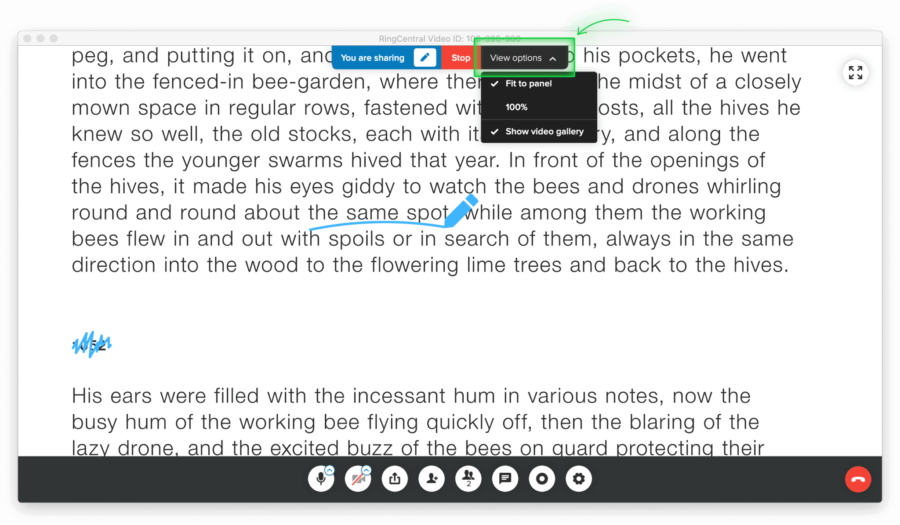With remote work becoming more and more popular (let’s face it, we could’ve all been working from home and saving time on the commute for ages), you might be wondering…
How can my company and team start working remotely? Where do we even start?
Good news is, there are lots of remote companies in different industries, from insurance to software, that have been working remotely—successfully!—for years.
Let’s look at six examples of companies that took the remote work plunge early and the steps they took to make it more convenient for their teams to work from anywhere:
- E-commerce software: Attraqt
- Finance: SuretyBonds.com
- CRM Software: PipelineDeals
- Insurance: True Blue Insurance
- Voiceover coaching: Such A Voice
- Marketing: W2O
👀 Does navigating remote work need to be this hard? Nope. Learn from your peers and grab our eBook to dive into five small business success stories.
Don’t feel like reading? Here’s a quick clip on the best remote teams that are doing it right:
1. E-commerce software: Attraqt
Meet Attraqt, a digital platform that helps e-commerce companies create awesome online shopping experiences and provide great e-commerce customer service with features like on-site search and personalization. You might recognize some of its customers, which include Boohoo.com, Timberland, and The North Face.
With locations all around the world, Attraqt needed a way for its teams to work remotely without expensive handsets. Originally, its employees’ business numbers were tied to physical landlines, which was a problem because they spend a lot of time traveling and had to give out their personal cell phone numbers for work.
So, to make it easier for everyone to work remotely, Attraqt tried a cloud solution—the idea was to give the worldwide team a way to be responsive to customers wherever they were located, without buying expensive local hardware. As David Phillips, its CIO, describes:
Moving to RingCentral has given us the flexible, frictionless communication environment we wanted. Employees can now use their mobile phones and laptops for calls, be accessible anywhere, and even host video conferences within the same integrated cloud environment.
Working remotely using RingCentral has been especially useful for Attraqt’s sales team, which needs to have lots of meetings and demos with prospects. So, they use the mobile app to not only have video calls but also share their screens and even write notes on the screen as they talk through their presentation.
“Our staff really appreciates the screen-sharing feature, on-screen annotation, the option to record meetings, and the ability to set up a conference that participants can join without the host even being present,” says David:

Other than salespeople, executives are probably the group of people who most need to work remotely—which is exactly what Attraqt’s senior leadership team does.
“On any given day, our various executives could be anywhere in the world,” says David. “With RingCentral on their phones and laptops, they can all get together virtually—no matter how far the team is scattered geographically.”
2. Finance: SuretyBonds.com
If you haven’t heard of surety bonds before, they’re kind of like an insurance policy. An “obligee” (usually a government agency) requires a “principal” (usually an individual or a business) to pay for a surety bond from an insurance company that basically guarantees that they’ll fulfill their obligation.
For example, one type of surety bond is an agricultural bond that the government requires from agricultural packers, market agencies, and dealers that makes sure they comply with the US Department of Agriculture’s regulations.
SuretyBonds.com is a website that lets thousands of insurance agencies quote, buy, and issue surety bonds—in minutes. This is almost unheard of. (Their competitors take days to do this, not minutes.)
As its founder and President, Lamon Warnock, describes, the key to making this incredible turnaround time work is communication.
Because the company’s been growing so quickly, Lamon has been hiring remote workers to communicate with agents from, well, everywhere. Lamon says:
We can transfer a call to south Georgia or Ohio, and the agent never knows that we’re not all in the same office.
By using a team messaging app, his employees can have a steady stream of conversations with each other that aren’t in-depth enough to require a phone call—but are too urgent to be communicated through emails:
“The problem we find with email is there is a delay—and often nobody notices,” Lamon says. “With RingCentral, you hear the ding and that tells you, hey, you’ve got something to check out, which you need to look at right away. It allows us to run faster.”
[ebook-download title=”Grab the Remote Work Playbook” link=”https://www.ringcentral.com/remote-work-playbook.html” cta-text=”Read it now” src=””]
3. CRM software: PipelineDeals
One of the most popular CRMs out there for both small and big businesses, PipelineDeals helps teams like Fujifilm’s and Garmin’s get a clear view of their sales pipelines and close more deals.
And it does this with a distributed team. Over half the company works remotely.
“For example, I’m based in Philadelphia, and most of my staff is in Seattle,” says Paige Thomas, the company’s Customer Care Manager.
Maintaining a cohesive team like that can be difficult, but communicating together on the RingCentral platform makes it a lot easier, makes it feel like we’re a real team. And it lets everyone stay connected and get their work done even if they’re not at their desks.
One thing that the PipelineDeals team is extremely proud of is their mission to have customers always be able to reach a human when they call.
Often, that’s hard enough to do, even with the whole team in one office. PipelineDeals manages to do this—with remote workers. “RingCentral is a big help there because as a cloud phone solution that we can use anywhere, it lets our support reps take calls even if they’re working remotely or on the road or if it’s a weekend and someone has an emergency.”
Want more WFH tips? Download the Remote Work Task Checklist.
4. Insurance: True Blue Insurance
“Anyone using remote workers should use video conferencing.” That’s what Brian Greenberg, True Blue’s CEO and founder, thinks. And with good reason.
Nearly all of the True Blue Insurance’s team members work remotely, and the team never misses the beat. How? By having weekly video meetings. It helps build a level of familiarity among everyone that naturally fosters better collaboration.
“It’s so important for people to see each other,” says Brian. “It builds more of a relationship.”
Other than for meetings, Brain also uses RingCentral, his all-in-one communications platform, to have video training sessions with his agents. To get more use out of these sessions, he records them and then puts them up on the company’s intranet so that anyone on the team can refer back to these videos when they need to.
For insurance companies, it’s also important to be able to fax documents. (Yes, fax machines are still used.) And even though True Blue’s team members work remotely, they can both receive faxes from and send them to clients—without fax machines.
They just send faxes directly from their computers.
“This also reduces our costs, because our remote employees no longer need fax machines,” Brian adds.
🤯 You could save up to $400 an hour in IT costs.
Explore the RingCentral Advantage for small businesses:
5. Voiceover coaching: Such A Voice
Behind every voiceover artist is a voiceover coach.
And some of the best voiceover coaches today come from Such A Voice.
With coaches and producers from around the world, Such A Voice relies on distance learning, which requires—you guessed it, remote work. Roth Bernstein, their VP of Technology, says:
Our support and fulfillment teams use their RingCentral numbers to make calls from anywhere, even from their own mobile phones, but still using their business number.
“Our voice coaches, who work remotely and often from their homes, can conduct phone training sessions with students and even send text messages—also using their Such A Voice business numbers.”
Even though the company is based in Vermont, it has over 50 employees who don’t all work out of the HQ, so the team uses an instant messaging tool to communicate with both in-office and remote folks:
“It makes it really easy for our internal teams to communicate, even when we’re at opposite ends of the country,” says Roth.
6. Marketing: W2O
Once a small PR firm for San Francisco-based healthcare companies, W2O is now an award-winning global agency network that offers pretty much any marketing service you can think of.
And being a global agency with a global team, having an easy way to join meetings is absolutely crucial.
“Online meetings are our primary communication tool, both internally and with clients,” says Jonathan Denize, W2O’s IT Manager.
The team’s employees, who are based all over the world and travel often, love being able to just click to join a meeting.
Another thing they find useful? A good screen sharing feature.
Specifically, they needed an app that turns off email, text, and app alerts so that there wouldn’t be annoying pop-ups while people were sharing their screens. To do this, they used RingCentral:
“We have a lot of remote workers around the world,” says Jonathan, “And they really appreciate that they can now use just one business number that will work wherever they are, whatever device they’re using, and they never have to give out their personal cell or home phone numbers.”
And like most remote teams, W2O needs a variety of options for getting in touch with people. Sometimes, a video call is better than an instant message. Sometimes, the situation is more urgent and needs a quick SMS response. Jonathan made sure that they had a tool that allowed for any mode of communication.
What’s also great is that this single business number lets our employees manage any type of communication, not just a phone call. If you want to send someone on our team an SMS text message, you can use their business number. If you want to send them an electronic fax—which happens more than you’d think—you can use that same business number.
How will you model your business after these remote work examples?
No matter what your line of business is, there is a way to get more done without being physically in an office.
Sure, it requires a bit of creativity, but as you can see from these examples, the main ingredient is a good communication and collaboration tool.
If you can help your team stay in touch and get answers from each other quickly (well, more quickly than using emails), then you’re already ahead of the curve in creating a successful remote work environment.
Originally published Mar 23, 2020, updated Jul 23, 2024








